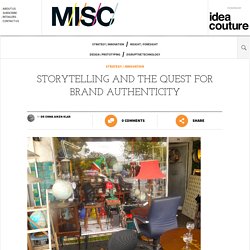

Be Laser Focused on Your Customers - The Beginners Guide to Online Marketing. The Beginners Guide to Online Marketing Chapter One Written by Neil Patel & Ritika Puri At any given time, your company has hundreds of options for running marketing campaigns.

We’re not exaggerating. You can write blog posts, spend six figures on pay-per-click ads, send newsletters, and tweet to your heart’s content. These questions are daunting. Ignore this advice. Marketing is strategic. Step #1 of successful online marketing is an understanding of your company’s exact needs and goals. This chapter is going to take a drastically different approach from most marketing guides that you’ll read. Here’s what you need to know,before you even think about running your first online marketing campaign. Average marketers think in campaigns. Lars Lofgren Growth Manager, KISSmetrics Marketing Starts with Your Customers Every marketing strategy should start with your customer base. Before jumping into your online marketing strategy, have a conversation with your existing customers.
Finding the Strategic Sweet Spot. In October 2010, Gap quietly launched a rebranding of its global corporate identity.

The entire launch lasted approximately eight days due to an out-pouring of customer disapproval. In response, Gap came up with another disappointing idea: outsource the redesign to the general public. This move infuriated the design community. In particular, organizations like AIGA (formerly American Institute for Graphic Arts). Their view was that opening up the redesign to the general public diminished the importance of the industry and was an insult to the graphic design discipline. What did they change exactly? There are many moving components when developing or redeveloping a successful brand identity. In Pursuit of Customer Intimacy and Operational Excellence. In their 1997 book, The Discipline of Market Leaders, Michael Treacy and Fred Wiersema describe three fundamental business strategies: operational excellence, product leadership and customer intimacy.

They argue that in strategy formation, focus is critical and therefore companies need to decide which one of these strategic directions to pursue. They can’t do all three. Treacy and Wiersema define operational excellence as “providing customers with reliable products and services at competitive prices, delivered with minimal inconvenience”. Think Dell in its early days. Customer intimacy, on the other hand, “means segmenting and targeting markets precisely and then tailoring offerings to match exactly the demands of those niches”.
It should be clear that you can’t do all three, and that any company that tries to do so will fail to compete effectively. Is it possible to pursue customer intimacy while achieving operational excellence? Storytelling and the Quest for Brand Authenticity. Human beings are storytellers.

We use stories to understand and explain what life means, and we use big stories, or myths, to teach ourselves important lessons. Sisyphus and his endless attempt to push the rock up the mountain; Raven the Trickster who brought light into the world; Gilgamesh and his quest for eternal life. These myths and others are epic stories that, while quite different from each other, work in a similar way to help us make sense of our experiences, form shared understandings, define cultural values, delineate right and wrong, good and evil, sacred and profane. Cross culturally, humans are attracted to the stories that myths tell because we imagine ourselves in them, and then structure the ways we think and behave in the world accordingly. But myths are more than ancient tales; everyday popular culture is rife with stories that work to shape our experiences in and of the world and brands play a major role as storytellers. Strategy / Innovation. From Cultural Revolution to Luxury Revolution: The Transformation of the Luxury Brand Experience.
When thinking about luxury, the first question that comes to mind is, what is a luxury brand?

I am sure there are thousands of brands that would be quick to think of themselves as luxury brands but are they right? Many so-called luxury goods fall into the category of ‘nouveau luxe’ or afforded luxury – premium products with a certain glamour quotient. Luxury used to be closely associated with expense and prestige, ultimately something that can only be had by a few. The past 10 years has seen explosive growth in what is being called the “massification of luxury goods.” Luxury has gone mainstream but does this still make them luxury brands? Coach literally reinvented itself in 2001 as a fashion-forward producer of mass luxury goods to better compete against stronger luxury brands.
Customizable Retail Gifts : "target 3d printed" No matter the season, people are always looking for unique gifts to give—to satisfy this need, Shapeways teamed up with Target for the creation of a Targed 3D-Printed collection of items.

Items in the Target Shapeways Shop included small trinkets like charms, keychain accessories, pendants, as well as a few ornaments that could be customized for the holiday season with material, color choice or a special engraving. These items ship free in the US and are priced on the site from about $7.99 and up, making it super accessible to get your hands on a 3D-printed item. The 3D-printed bases were developed by Target's own designers using the Shapeways ShapeJS tools, letting consumers put the finishing touches on their personalized products.
Millenial. Personalisation/Collaboration.